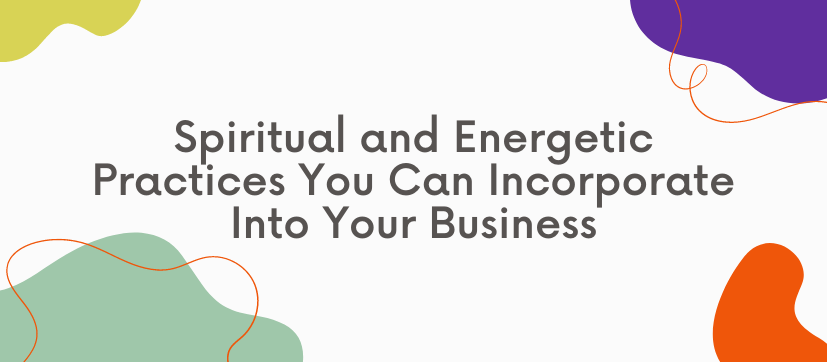5 Tips for Nailing Your Client’s Voice and Tone
5 Tips for Nailing Your Client’s Voice and Tone

Find out ways you can get inside your client’s head and write copy that everyone will swear came directly from them.
What is Voice and Tone?
Voice is the overarching “how” people say things. It’s their vibe, their gen e se qua, it’s their personality. That is what the voice of a person or brand is all about. Tone is going to change based on who they are speaking to. Such as what platform they are on or the level of formality that are at. An email might have a different tone than a website, as well as a different tone from social media captions or a press release. As an example of that, I am me and I have my voice. When I speak to my husband, my voice is a little different than when I am speaking to my baby daughter. So it’s still my voice, but those are two different tones. That is a more personified example of voice and tone.
Voice and tone is also kind of a sexy phrase that you can use when talking to clients as a service you can offer. You can offer to identify a voice and tone, or come up with a voice and tone guide for clients. Those are some cool services or offerings that you can bring into your menu options if you feel like that would be fun for you.
Social Media Stalking
My first tip is to do a good amount of social media stalking. Find out where they are on social media and binge their content. Poke through their Instagram posts, even better their stories because that is hopefully where they are talking. Look at their Facebook page, join their groups if you can. Get on their Twitter and LinkedIn. If you are writing for coaches or course creators, ask if you can have access to their courses. A lot of times this is a perk of the job because you get access to amazing trainings by really brilliant people, but you are also going to be able to binge their content and really get that voice inside your head and then be able to translate that into your copy.
This part of our job, the research part, is something that tends to get overlooked. But it will help things go so much faster and smoother down the line if you really take the time to put in this research. And that being said, make sure that you are quoting that time when you send out pitches and proposals. That is something that I need to be very conscious of because I have that corporate agency mindset that I am working through, where if people aren’t seeing actual tangible products of what I’m putting out, like if they are not seeing words on paper, I assume they think I’m not working hard enough. God forbid if someone thinks I’m not working hard, but that research, the social media stalking, the listening, observing and taking it all in, is a very very important part of nailing the voice and tone of a brand or business.
Transcribe Interviews
My next tip is to transcribe interviews. So, if you have a client who is on podcasts, or goes on their IG stories a lot, or if you can get your hands on any of their audio recordings, go in and as a practice, just transcribe. Type as they are talking and it’s almost like a muscle memory thing, you are going to start getting used to how they speak. You’ll start to notice things like, they always say this word and then this word. Or their cadence goes like this or they say Hi Friends, or they say OMG, You Guys, or Ya’ll. You’re going to pick up on those things when they are talking and if you are typing it out you are creating those connections between your eyes, your ears and your fingertips. And by doing that, it’s going to be much easier and faster to create the copy that they are requesting from you.
Interview Them
My third tip is to interview your client. Have a speaking conversation or even better, have an in-person meeting at a coffee shop or something and interview them, if you can. I like to send written questionnaires and then also do interviews with my clients over the phone or zoom. And it depends on the person, sometimes I’ll do both and sometimes I’ll just do a verbal interview and sometimes I’ll just send over a questionnaire.
In those questionnaires and in that copy, there are brand related questions but a lot of the questions are fun like, if your brand was a car, what car would it be? Who would you love to see perform live, alive or dead? What celebrity would you most like to grab a beer with? What would you choose for your last meal? What is your spirit animal? I ask fun questions like that and it just kind of loosens them up and gets them excited about talking about themselves and takes the pressure off of maybe giving a “wrong answer” about their brand or business.
They are talking to you and they are looking at you as the expert, the professional, the professional copywriter, the professional branding person, the professional marketer. So it might be a little nerve wracking if you are asking all these branding questions and they might not want to get it wrong. That is definitely a personality trait I have, I will bend my intuition at times in order to hopefully get the right answer. But that is why I like to put in a lot of those playful questions in the questionnaires and interviews as well, because you are going to draw out of them certain things that maybe wouldn’t have come to mind or they wouldn’t have felt comfortable speaking with you about, and then you are going to pick up all those little nuances and use it in their copy.
We Say, We Don’t Say Exercise
My next tip is the We Say, We Don’t Say exercise. I learned this at an agency I worked for and it was kind of cool the way we did it. We would brainstorm a list of words we thought the brand would say and a list of words that they would never say. We would print them out and put them up on these big boards, which was a cool experience for the client to come in and see. They would have almost a kinesthetic experience with these words, which was cool and super useful.
It’s best to do this in person with your client, but it can still be done virtually or digitally if that’s not possible. So you are going to go in and brainstorm a list of words that you think the brand would say and not say, and then present them to the client. You probably want to do it in a way that you can see their physical reaction, like in a zoom call or ideally in-person. You are going to notice their emotions, their facial expressions, you’re going to notice what they are drawn to and you might even uncover some things that they didn’t know about their own voice or how they want to be perceived, and then you can help them work through that.
Your We Say list might include things like modern, stylish, cutting edge, luxury, and maybe your We Don’t Say list would include things like, traditional and lacy. There are going to be some words that your client is going to be totally put off by, so if you can identify those, then you are really going to be able to nail their voice and tone even better. And you are also going to avoid spiraling. This can happen with some clients. If you accidentally throw in a word that let’s say before you even came on board, their team had meeting after meeting about, and debated whether or not to use this one word, and then they came to a conclusion about. Although you didn’t even know this because you were just living your life, but then you came into the room and threw this word back into the mix, that could start a $h*t storm. So it’s a good thing to kind of identify those trigger words or those we don’t say words, right away so that you don’t find yourself in one of those sticky situations.
Ask Them to Send Examples of Brands They Like
My last tip is to ask your client to send you examples of brands that they like, brands that resonate with them or brands they are inspired by. Maybe they are just not explaining what they want in a way that you are understanding. So if you are feeling some stickiness in your communications or you’re sending over pitches and ideas and they are just getting bounced back to you and you are just feeling like you don’t know what to do. Maybe it’s simply just a misunderstanding.
Here is my example. There was an episode of Property Brothers on HGTV where the woman was saying that she wanted a “blinged out powder room”. But when they went to the tile store, the tile she was drawn to was actually a chic hotel vibe. So the brother who was with her, was hearing bling and was thinking over the top mirrors, glitter, chandeliers, and gold. But what she actually wanted was a stylish chic hotel vibe, she just didn’t have the right words to explain it. After she showed him what she wanted, and cleared up the misunderstanding, he was able to give her a beautiful chic hotel vibe powder room and everyone was happy. Examples are key!
Try These Five Tips
I hope these five tips are helpful for you in learning how to nail your client’s voice and tone and maybe even your own brand’s voice and tone. Here they are one more time:
- Do a good amount of social media stalking.
- Transcribe interviews if you can get your hands on them or transcribe your clients talking anywhere.
- Interview your client. Lead the interview over the phone, written or both.
- Do the We Say, We Don’t Say exercise.
- Ask your client to send you examples of brands that resonate with them to clear up any miscommunications.
Do the research, charge your worth, and soon you’ll be writing epic copy that is on point for you and your client’s brands, nailing their voice and tone.
If you want to connect with me, I have a Facebook group called the Copywriting Girls Club. It’s a really fun place to network with other copywriters and chit chat about all things copywriting. You can join HERE.
If you would like some more of my best copywriting tips, come follow me on Instagram HERE.
I also have an awesome Spread Your Magic Cheat Sheet where I give you over 20 examples of how you can repurpose long form content. So this can be for your own content marketing or your client’s content marketing. Take a blog and use it for Instagram posts, Tweets, publish articles on LinkedIn, a script for a video, and on and on and on. Grab your free guide HERE.
And If you are interested, learn more about QRE, the certification program Amy is doing HERE.









